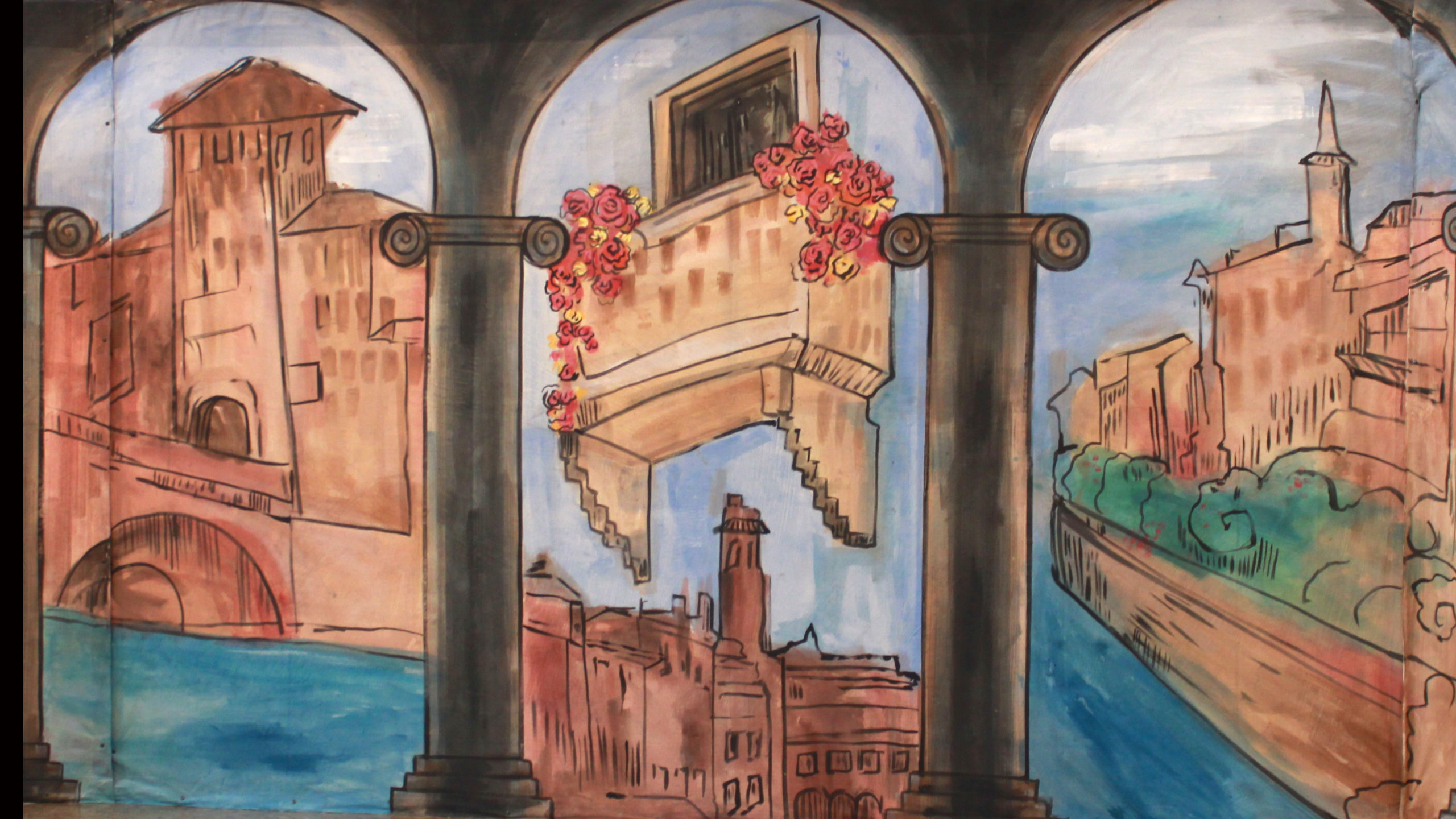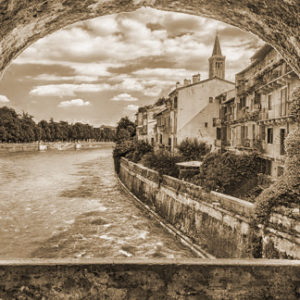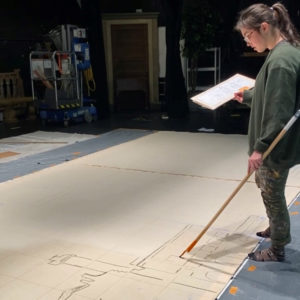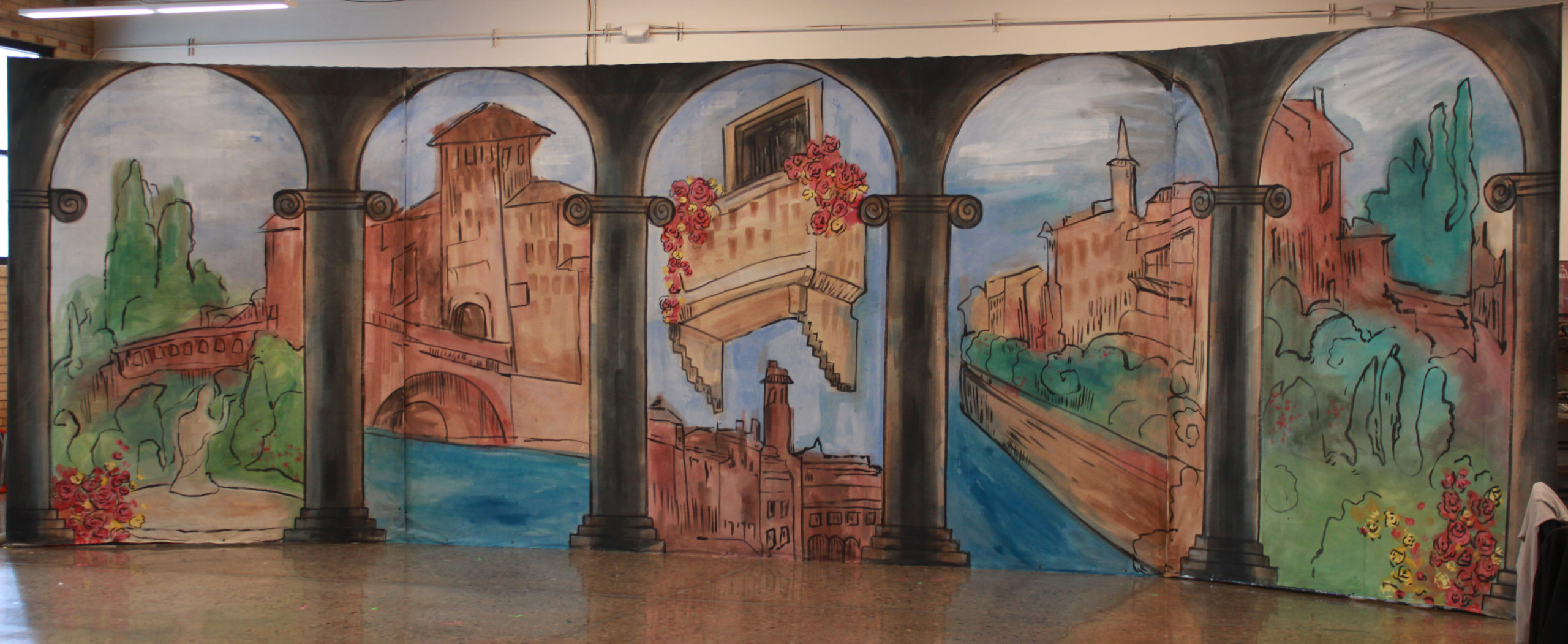The Sets and Costumes of Romeo & Juliet

By Angelica DiIorio
Each season, our Artists in Residence travel around Colorado, performing Opera Colorado’s touring productions for schools and community centers. This season’s spring production of Romeo & Juliet includes brand-new sets and costumes! New sets have been created for touring productions in the past, but each one is special in its own way. Let’s learn a bit more about the sets and costumes in this version of Romeo & Juliet.
Learn more about the creation of Romeo & Juliet from a Q&A with Director Cherity Koepke>>
A DESIGN THEME IN ROMEO & JULIET
Before we start talking about the inspiration behind the sets and the costumes of Romeo & Juliet, it is important to first understand Director Cherity Koepke’s overarching theme of contrast between “the old” and “the new.” Despite the original story being set in the fourteenth century, it is a timeless tale. Beyond the star-crossed lovers plotline, this story is about old grudges preventing the new generation from moving forward. This contrast between the old and the new thinking is present not only in the story but in the sets and costumes as well.
THE INSPIRATION FOR THE ROMEO & JULIET SETS

When Cherity was thinking of how to convey this contrast between old and new ideas in the sets, she discovered some images of Verona, Italy in an edition of National Geographic. The famous architecture of the city, pictured in a sepia tone, inspired the buildings used in the panels for the set. The sepia coloring of the images highlights the idea that Romeo & Juliet is grounded in reality but somehow outside of time. Cherity explains, “The pictures looked old, and I wanted the background of the set to look old. The watercolor aspect made for a dream-like quality, and the buildings had washed-out tones, so it created that ‘removed-from-time’ feeling.”
The images make up five vignettes, with Juliet’s balcony at the center. This background with all five scenes is on stage for the entire performance.
BUILDING THE SETS

To design the sets themselves, Cherity worked with local artists: designer Bruce Bergner, builder Ron Mueller, and painter Annika Radovcich. First, Cherity and Bruce had numerous meetings to share ideas and create sketches. Once approved, designs moved forward from this collaboration. Next, the artists worked on sketching and ensuring correct sizing and scaling with a grid method. Finally, Annika drew the design to-scale and added the paint.
Coincidently, painter Annika Radovcich’s first painting project was for a scene in West Side Story, another modern interpretation of Romeo and Juliet. She also worked with Opera Colorado on the sets for our Opera on Tour production of The Pirates of Penzance.
THE INSPIRATION FOR THE ROMEO & JULIET COSTUMES
Since this touring production has been updated to modern day, the costumes once again play the old against the new. It was important to Cherith that the audience could see themselves represented, but that they still had echoes of the past. The costumes are based on clothes that someone today would wear, combined with a Renaissance influence to suggest the original time period of Romeo & Juliet. For example, the cut on some of the shirts is reminiscent of armor, and higher necklines are used instead of the traditional ruff of the Renaissance era.
Unlike many productions which put the Capulets in red hues and the Montagues in blue, the color scheme is a little different this time. To help define the families, those connected with the Montagues wear blues and greys, and the Capulet family is in greens and earth tones.
PLANTING A BRIGHT FUTURE
Generous sponsorship from Joyce de Roos made the creation of this brand-new production possible. You will see little touches of her influence on the sets as well. Make sure to take a closer look at Juliet’s balcony—you will see Joyce’s choice flower, red geraniums. While these sets are used for Romeo & Juliet now, they might be repurposed for other productions in the future. We are thankful to Joyce for supporting our education efforts.

—
We are excited to share these beautiful sets for Romeo & Juliet with audiences throughout Colorado this winter and spring.
Intrigued? Book a performance for your school or community venue. Contact us by email at education@operacolorado.org or by phone at 303.778.7350.
Did you know that Opera Colorado offers scholarships for our educational programs? Scholarships are available on a first-come, first-serve basis. To apply, please fill out and return the appropriate application: School Scholarship or Community Scholarship.


